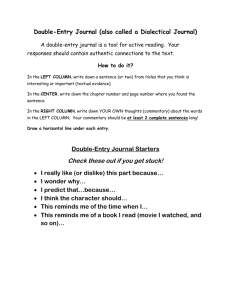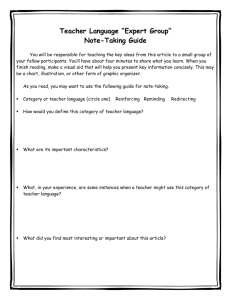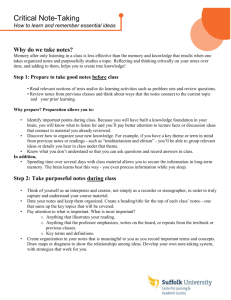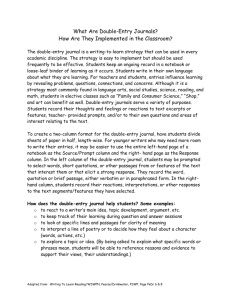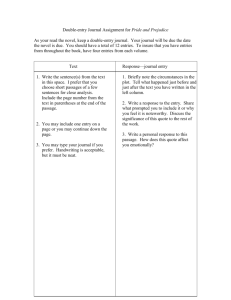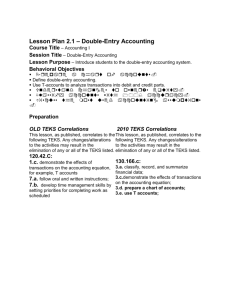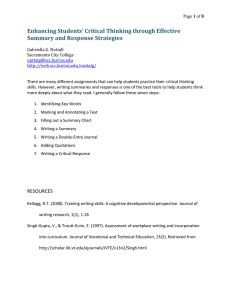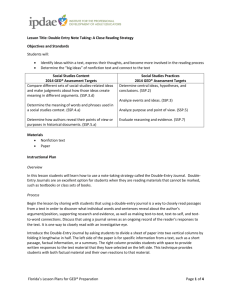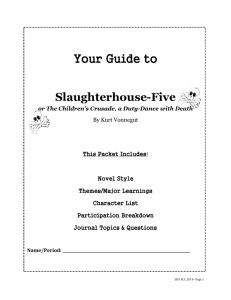Activity Six: Double-Entry Note
advertisement
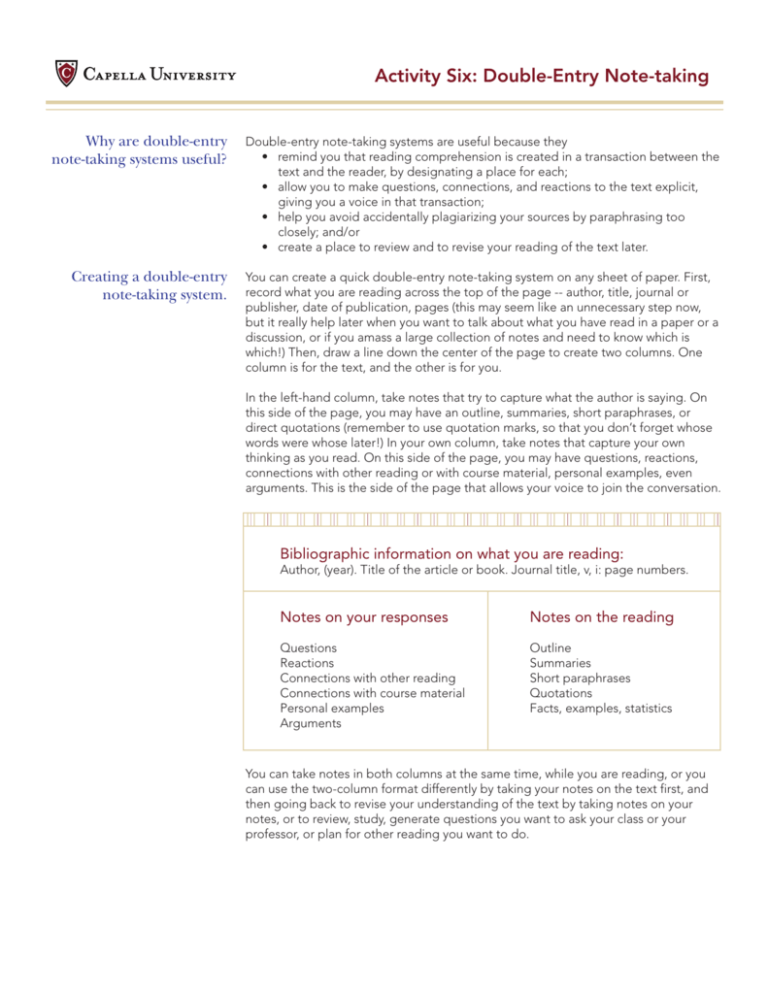
Activity Six: Double-Entry Note-taking Why are double-entry note-taking systems useful? Double-entry note-taking systems are useful because they • remind you that reading comprehension is created in a transaction between the text and the reader, by designating a place for each; • allow you to make questions, connections, and reactions to the text explicit, giving you a voice in that transaction; • help you avoid accidentally plagiarizing your sources by paraphrasing too closely; and/or • create a place to review and to revise your reading of the text later. Creating a double-entry note-taking system. You can create a quick double-entry note-taking system on any sheet of paper. First, record what you are reading across the top of the page -- author, title, journal or publisher, date of publication, pages (this may seem like an unnecessary step now, but it really help later when you want to talk about what you have read in a paper or a discussion, or if you amass a large collection of notes and need to know which is which!) Then, draw a line down the center of the page to create two columns. One column is for the text, and the other is for you. In the left-hand column, take notes that try to capture what the author is saying. On this side of the page, you may have an outline, summaries, short paraphrases, or direct quotations (remember to use quotation marks, so that you don’t forget whose words were whose later!) In your own column, take notes that capture your own thinking as you read. On this side of the page, you may have questions, reactions, connections with other reading or with course material, personal examples, even arguments. This is the side of the page that allows your voice to join the conversation. Bibliographic information on what you are reading: Author, (year). Title of the article or book. Journal title, v, i: page numbers. Notes on your responses Notes on the reading Questions Reactions Connections with other reading Connections with course material Personal examples Arguments Outline Summaries Short paraphrases Quotations Facts, examples, statistics You can take notes in both columns at the same time, while you are reading, or you can use the two-column format differently by taking your notes on the text first, and then going back to revise your understanding of the text by taking notes on your notes, or to review, study, generate questions you want to ask your class or your professor, or plan for other reading you want to do.
